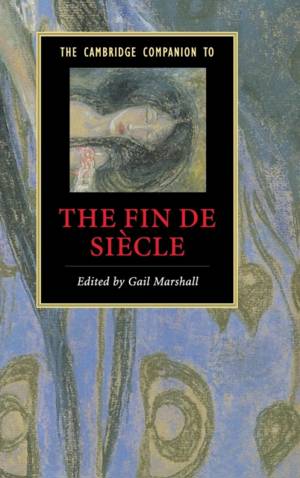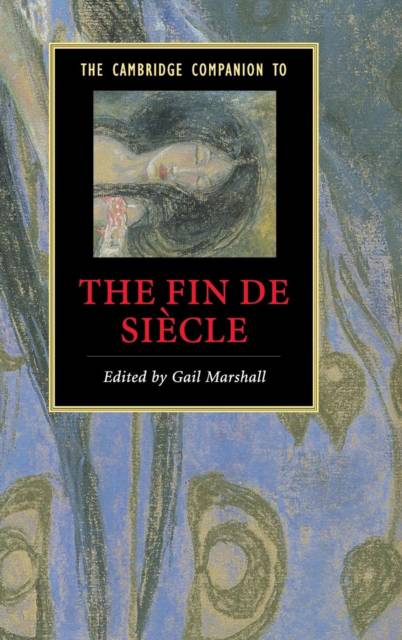
Door een staking bij bpost kan je online bestelling op dit moment iets langer onderweg zijn dan voorzien. Dringend iets nodig? Onze winkels ontvangen jou met open armen!
- Afhalen na 1 uur in een winkel met voorraad
- Gratis thuislevering in België vanaf € 30
- Ruim aanbod met 7 miljoen producten
Door een staking bij bpost kan je online bestelling op dit moment iets langer onderweg zijn dan voorzien. Dringend iets nodig? Onze winkels ontvangen jou met open armen!
- Afhalen na 1 uur in een winkel met voorraad
- Gratis thuislevering in België vanaf € 30
- Ruim aanbod met 7 miljoen producten
Zoeken
The Cambridge Companion to the Fin de Siècle
€ 178,95
+ 357 punten
Omschrijving
Situated between the Victorians and Modernism, the fin de siècle is an exciting and rewarding period to study. In the literature and art of the 1890s, the processes of literary and cultural change can be seen in action. In this, more than any previous decade, literature was an active and controversial participant within debates over morality, aesthetics, politics and science, as Victorian certainties began to break down. Oscar Wilde, Aubrey Beardsley, H. G. Wells, Bram Stoker and Olive Schreiner were among the most prominent, occasionally even notorious, writers and artists of the period, challenging establishment values and producing a distinctive literature of their own. This volume includes the main currents of radical and innovative thinking in the period, as well as the attempts to resist them. It will be of great interest to students of Victorian and twentieth-century literature, art and cultural history.
Specificaties
Betrokkenen
- Uitgeverij:
Inhoud
- Aantal bladzijden:
- 288
- Taal:
- Engels
- Reeks:
Eigenschappen
- Productcode (EAN):
- 9780521850636
- Verschijningsdatum:
- 13/08/2007
- Uitvoering:
- Hardcover
- Formaat:
- Ongenaaid / garenloos gebonden
- Afmetingen:
- 162 mm x 235 mm
- Gewicht:
- 589 g

Alleen bij Standaard Boekhandel
+ 357 punten op je klantenkaart van Standaard Boekhandel
Beoordelingen
We publiceren alleen reviews die voldoen aan de voorwaarden voor reviews. Bekijk onze voorwaarden voor reviews.










